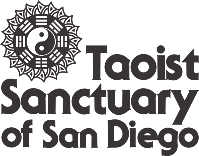Three Phase Relaxation Qi Gong
Dan Tian Breathing
The most commonly used breathing pattern in qi gong exercises is that of Dan Tian breathing. In this pattern the diaphragm draws downward and the lower abdomen moves forward and away from the center of the body during the inhale phase. During the exhale phase the diaphragm releases and the abdomen moves back towards the center of the body. The breath is drawn into the body through the nose and may be exhaled through either the nose or mouth depending upon the exercise being performed.
The focus of concentration is upon the lower abdomen or lower Dan Tian area. This type of breathing lowers the blood pressure, activates the venous return of oxygenated blood and increases the circulation of the qi and blood through the channels and collaterals. The focus of concentration in the lower abdomen also helps to quiet the mind. This is due to placing awareness upon the physical functioning of the body and the drawing down of the qi from the upper areas of the body. This breath may be performed during most daily activities.
The rate and volume of the breath will vary according to circumstances and ability of the practitioner. It is important to breathe comfortably. Trying to force a larger, deeper, slower breath may increase existing tensions in the practitioner. The rate and volume should be gradually changed to a slower, larger volume.
Three Phase Relaxation Exercise
The Three Phase Relaxation exercise is a method of progressive relaxation. The breathing is focused in the lower abdomen (Dan Tian breathing) throughout the exercise.
While concentrating upon relaxing the body, keep the focus of the mind upon the actual sensation of the physical body. Note areas of tension, pain, pleasure and lack of sensation.
1. Close your eyes – place awareness in the lower abdomen.
2. Breathe into the lower abdomen 5 times.
3. Place your awareness upon the Bai hui (Du20) acupoint at the top of the head where the sutures meet. Imagine it flowing with white light.
4. Relax the muscles on the side of the head in sequence: the jaw, side of the neck, shoulders, upper arms, lower arms, hands.
5. Place your awareness upon the tip of your middle finger (pericardium channel). Imagine it glowing with white light.
6. Return to step 2.
7. Relax the muscles on the front of your head in sequence: scalp and forehead, eyebrows, eyes, upper cheeks and nose, mouth, tongue and lips, lower jaw, throat, upper chest, breasts and lower rib cage, upper abdomen, lower abdomen, top of thighs, front muscles of the lower leg, top of the feet.
8. Place your awareness on the tip of the big toe (liver and spleen channels) and imagine it glowing with white light. 9. Return to step 2.
10. Relax the muscles at the rear of your head in sequence: scalp, base of skull, back of neck, shoulders, upper back, lower back, gluteals, rear of thighs, rear of lower legs, bottom of the foot.
11. Place your awareness on the area between the first and second toes and the ball of the foot (kidney channel). Imagine it glowing with white light.
12. Place your awareness in the lower abdomen (Dan Tian area) and breathe slowly. Release any additional tension that remains in your body.
13. Finish by opening your eyes slowly. Then rub your palms together vigorously until they are warm and wipe the surface of your body starting at the head. Wipe the arms, chest, abdomen, lower back and legs.
